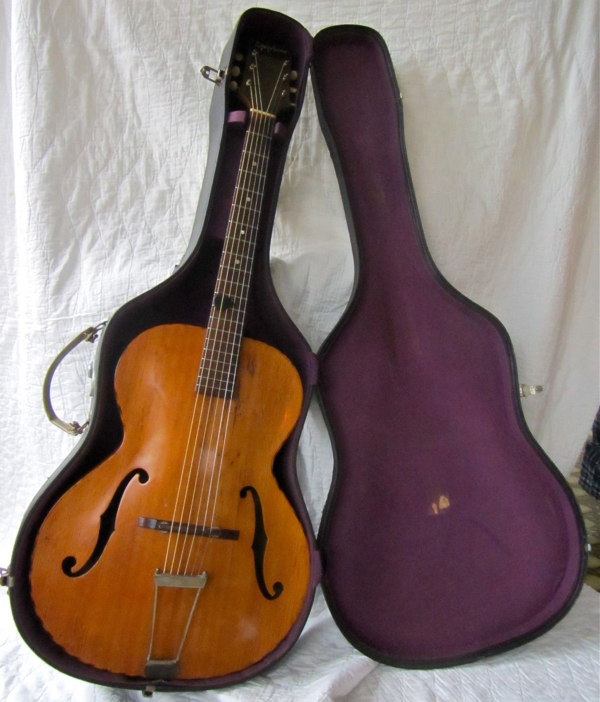
Close-up #37: 1940 Ritz SN 17093
These photos are from an online auction listing (no affiliation) – a blond, rather smallish looking archtop guitar in an old hard case which looks oversize and likely not original to this instrument.
The Epiphone label inside the body is of the "green" type which was used in instruments of the 1939–1943 period. The typed model name says "RITZ" – ...
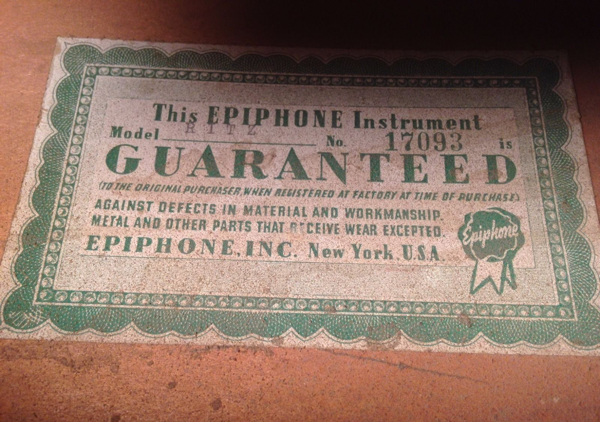
... which was a model name that first appeared in the "New prices" list dated October 10, 1940: "New model: Ritz, blond finish, auditorium size ... 47.50".
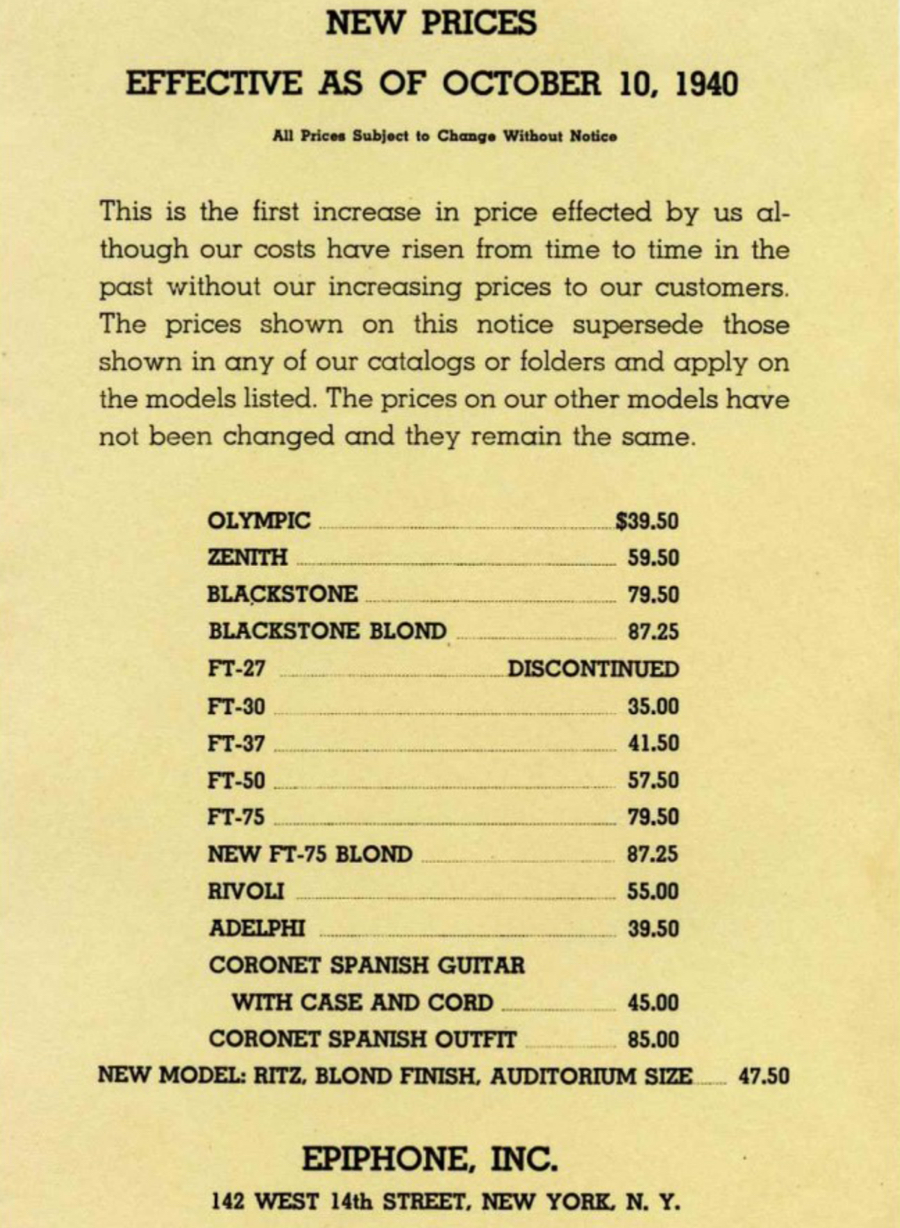
The serial number of this example is "17093" – actually one of the lowest (=earliest) SNs of any Ritz recorded in our registry database! According to our research, this SN range was manufactured in the second half of 1940 – matching well with that price list.
A picture of the "The Ritz" appeared in a mailer dated April 1941, under the cheeky headline "For Those Who Prefer 'Blondes'" ... promoting the recently introduced natural finish versions of Epiphone's mid-priced archtops. Unlike any other Epiphone acoustic archtop, the Ritz was only available in blond – or "blonde", as it was spelled there. With a price of $47.40, the 15+" wide Ritz was positioned between the the same-sized Olympic ($39.50) and the larger Zenith ($59.50) – both only available in the regular finish with sunburst top.
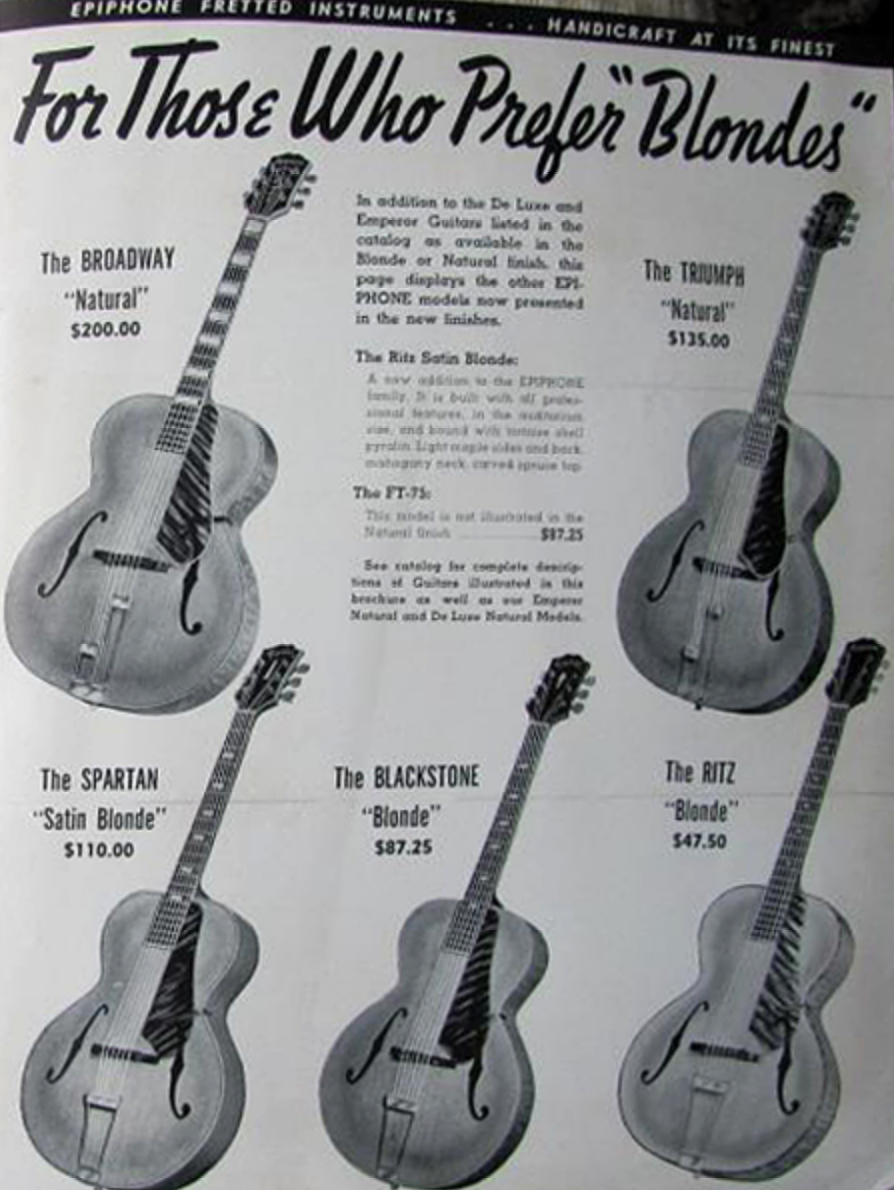
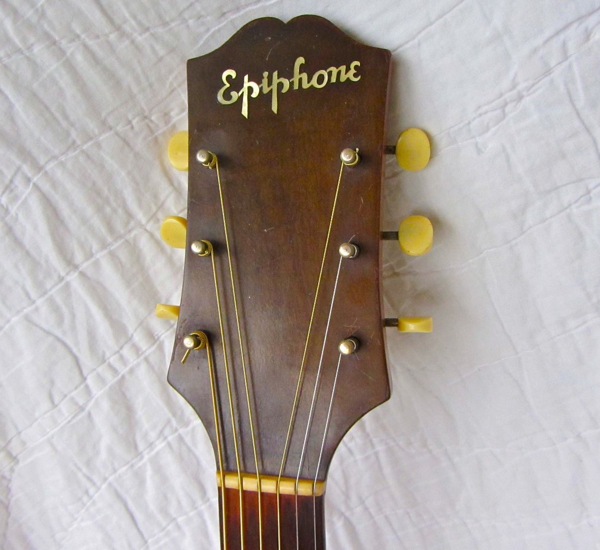
The tuners are Waverly-made 3-on-a-strip units with "bell-end" plates and plastic buttons – the standard machines on Epiphone's low-end guitars of the 1940–42 period. The neck is made of cherry wood, a species Epiphone increasingly used for necks starting around 1940.
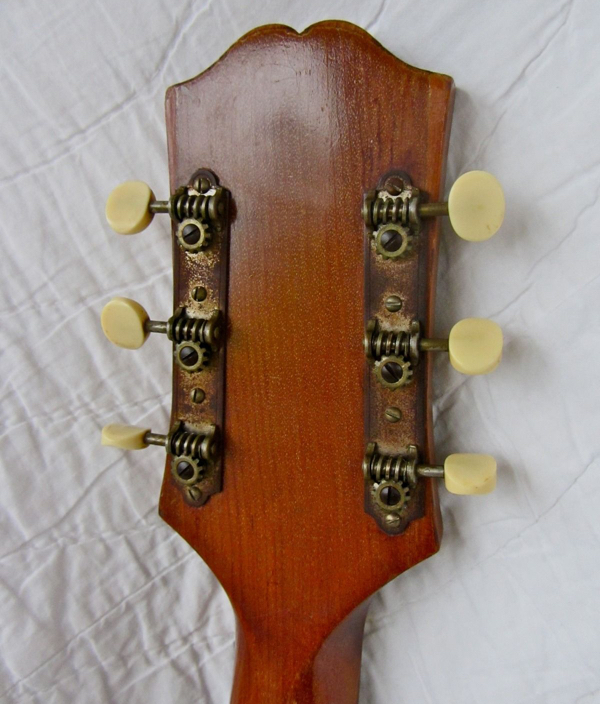
The carved spruce top shows some scars, and the pickguard got lost. The bridge and tailpiece look correct.
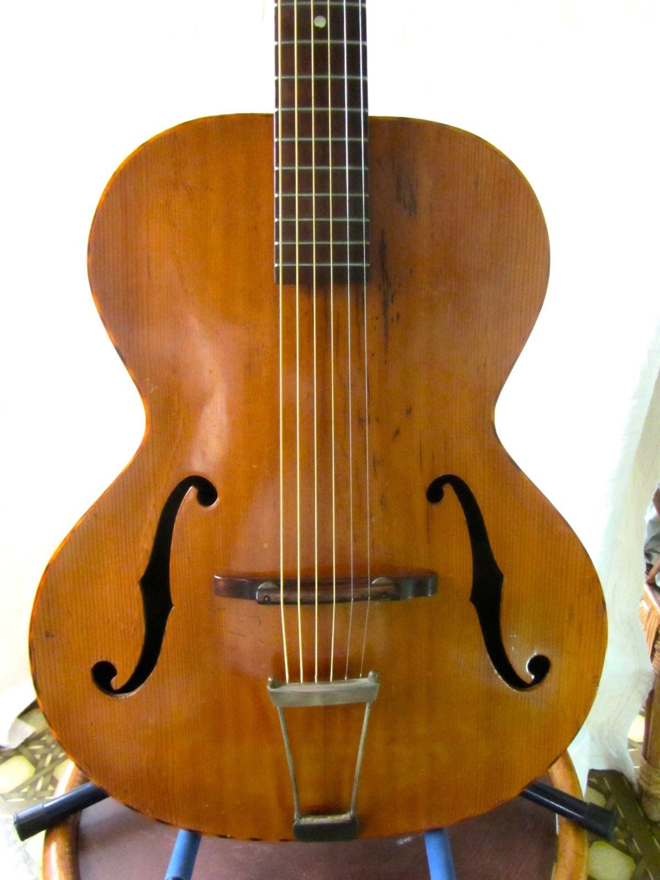
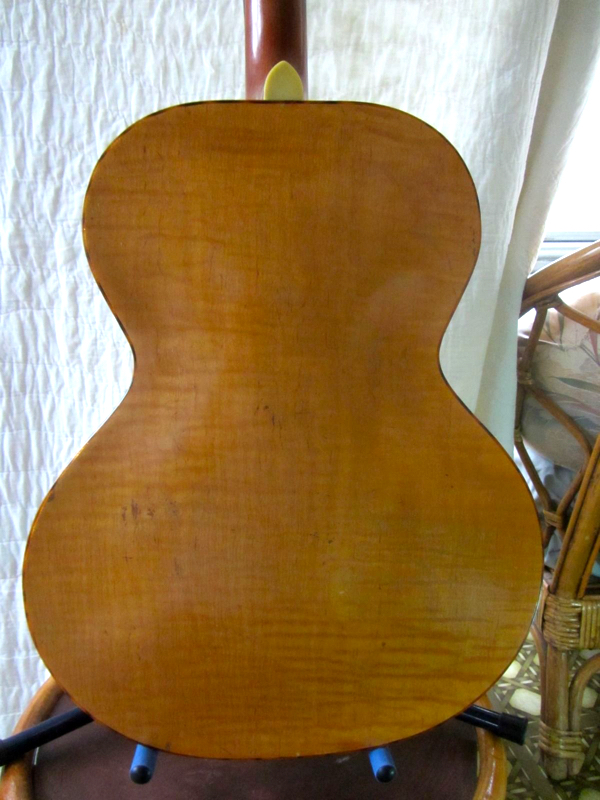
The body binding of the Ritz model is made of decorative "imitation tortoise shell pyralin" (catalog description) – a material used for pickguards but not used for bindings on any other Epiphone archtop. The same style tortoise binding can be seen on the FT 50 flattop (which was introduced around the same time) and on some electric Hawaiian Console models.
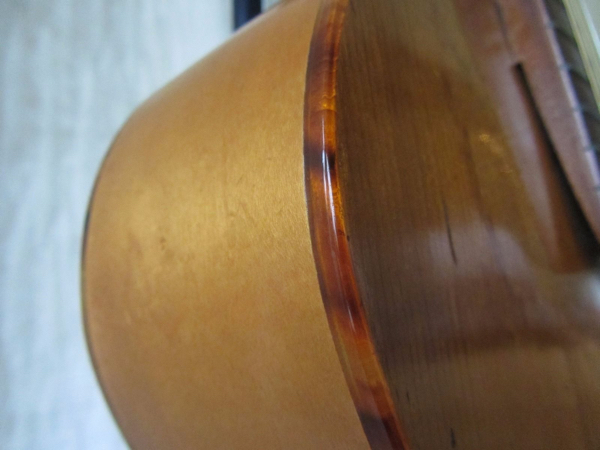
I guess it was no coincidence that around the same time in 1940, competitor Gibson launched the L–47 – a small-body archtop model sporting "curly maple rim and back" with "attractive shell ivoroid binding". Price: exactly $47.50 for the blond version ...! Who was first – Gibson or Epiphone? We don't know.
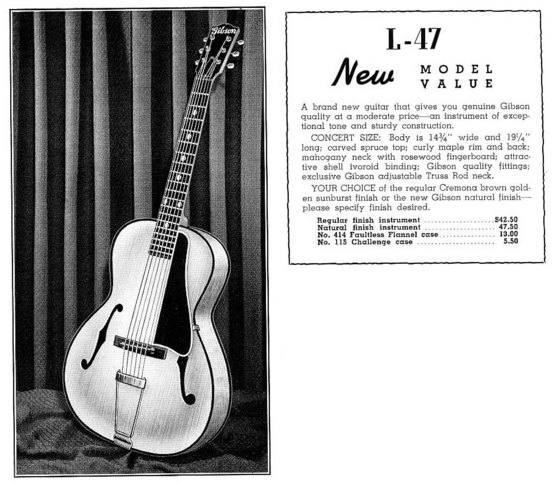
The Ritz model is among the less frequently seen Epiphone archtops – mainly due to it's relatively short production life of only 4 years: In the war year 1944 the Ritz was discontinued, along with the Olympic (plus all flattops and mandolins) – and production never restarted.
So how many Ritz examples left the New York factory? My estimate: Not more than a few hundred.
(March 31, 2017 – with info added in March 2018)